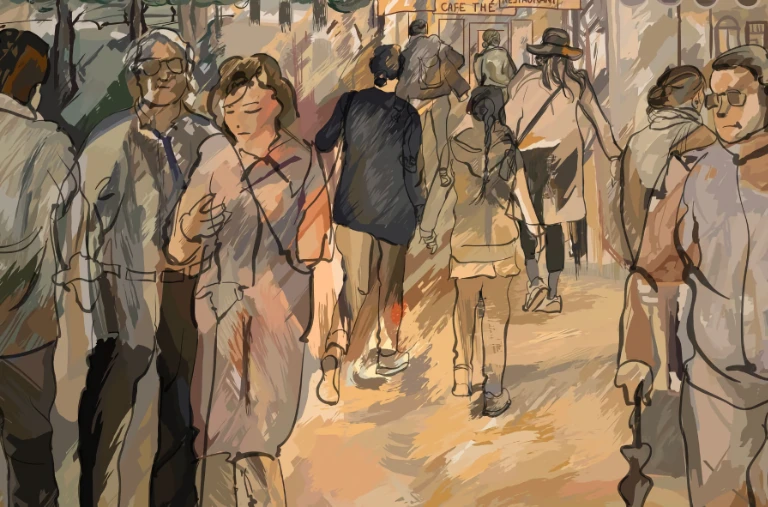From Groups to Greatness: Why Senior Teams Must Evolve Now

When working with senior teams, I will often ask, “What’s the difference between a group of people working together and a team?” Not a nice question.
My aim wasn’t to annoy them (although it did sometimes have that effect), but rather to help them start thinking about the nature and purpose of their team.
The truth is, the term “senior team” is one of the most overused — and most misunderstood — in business today.
Walk into many executive suites, and you’ll find not a true team, but a group of highly capable individuals working side-by-side. They may attend the same meetings, work toward overlapping goals, and even like each other. But they are not operating as a team.
And, in the age we’re in — where AI is reshaping how we work, markets are shifting faster than strategy cycles, and leadership trust is under strain — that’s a costly gap.
A group of senior leaders can keep the lights on, but we need a team to move an organisation forward.
Why “team” is no longer optional at the top
Senior leaders today are navigating a complex, fluid, and relentless world. Change comes from all angles — cultural, digital, economic, and political. Add AI into the mix, and the pressure isn’t just to do things faster, but to make better, wiser, more human decisions while doing so.
In this environment, a senior leader can no longer optimise solely for their function, metrics, or profile. Their “first team” must be the senior team itself — the one holding the organisation’s mission at its core.
That means shifting from “I” to “we” in a way that is rare at the top table. It means making decisions based on what is best for the whole business, even when that’s not best for your department. And it means trusting others enough to stake your own success on the collective’s ability to deliver.
The cost of staying as you are
Most senior teams we meet are still built on the habits of individual success. From school onwards, we learned to compete, to prove ourselves, to win on our own terms. And those habits are reinforced by corporate systems that reward personal results over collective outcomes.
The result? Political infighting. Silence in the room, but resistance in the corridors. Endless cycles of revisiting decisions. Leaders protecting turf instead of building trust.
It’s not just unpleasant — it’s slow, expensive, and in an AI-accelerated world, it’s a direct threat to relevance.
What truly effective senior teams do differently
A truly effective senior team is not just aligned on targets. It is united in purpose, mindset, and behaviour. It does three things exceptionally well:
- Delivers for all stakeholders — not just hitting the numbers but meeting the broader expectations of those they serve.
- Continuously improves — building learning into its ways of working so growth is sustainable, not just situational.
- Provides personal fulfilment — so that members thrive in the work and stay engaged.
This is achieved by mastering six interlocking disciplines:
- Team Mindset – The shift from “my function” to “our mission,” and from proving individual worth to amplifying collective value.
- Conversation – Curious, courageous, and compassionate dialogue that resolves conflict, accelerates clarity, and strengthens trust.
- Purpose – A shared “why” that goes beyond quarterly targets to shape how success is achieved.
- Ways of Working – Clear, agreed structures for decisions, accountability, and resource use that drive both speed and quality.
- Relationships – Trust deep enough for challenge, vulnerability, and mutual accountability without personal fallout.
- Stakeholder Connection – Ongoing, deliberate engagement with those whose judgment ultimately defines the team’s success.
Why this matters more in the age of AI
In a machine-integrated world, leadership’s value won’t come from holding more information or making faster solo calls. AI can do both better.
The edge will come from what only humans can do together:
- Seeing the whole board, not just your square.
- Making nuanced, values-led decisions in ambiguity.
- Anticipating unintended consequences before they happen.
- Building cultures where trust and belonging unlock full human contribution.
The senior teams that can do this will leverage AI to become a multiplier for human ingenuity. The teams that can’t will be left scrambling as technology exposes every crack in their alignment and culture.
The invitation
If you are part of a senior “team” that’s still operating as a group of individuals, this is your moment.
Make the shift — from positional power to collective leadership, from functional wins to enterprise impact, from personal survival to mutual success.
In the years ahead, the organisations that thrive will be led by teams who know how to think together, decide together, and grow together.
Groups of leaders will survive a little longer, but true senior teams will shape the future.

Contact
Speaking: hello@thisisspoken.com
Press, books, everything else: hello@elkeedwards.com